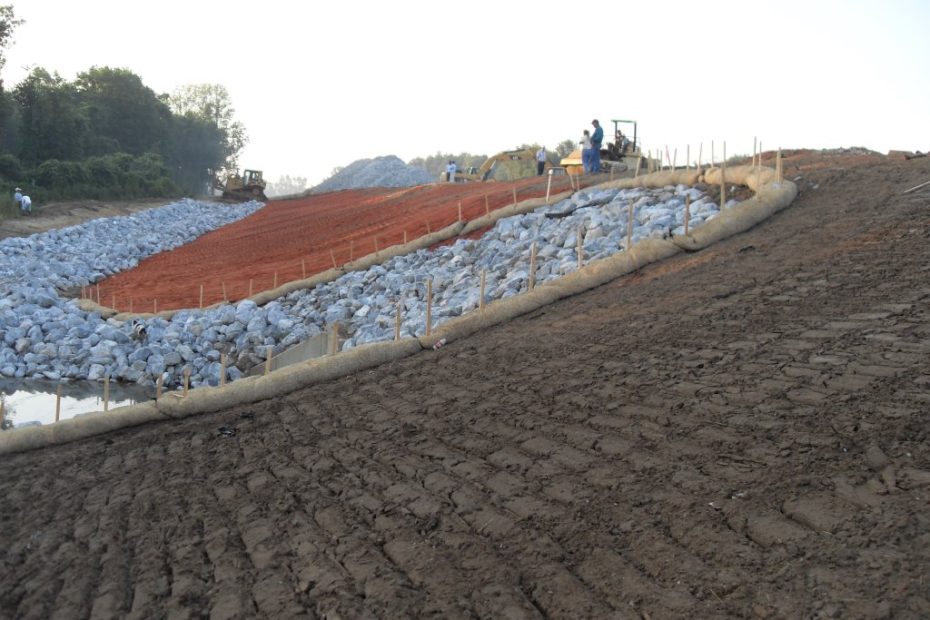Geotechnical Engineering Companies in South Africa: Leading Specialists in Dirt and Structure Analysis
Geotechnical Engineering Companies in South Africa: Leading Specialists in Dirt and Structure Analysis
Blog Article
Exactly How Consulting Civil Design Firms Add To Effective Project Management and Style Execution
Consulting civil design firms are important to the success of building and construction projects, combining technological proficiency with tactical oversight. By focusing on design optimization and risk reduction, these companies make sure that jobs are not only viable but cost-effective and also sustainable.
Role of Civil Engineers
Understanding the function of civil engineers is essential for the successful management of building tasks. Civil engineers serve as the foundation of framework advancement, ensuring that tasks are designed and implemented to satisfy capability, safety and security, and sustainability standards. Their expertise encompasses numerous aspects of design, consisting of structural, environmental, and geotechnical specializeds.
Civil engineers are accountable for performing feasibility studies, which evaluate the feasibility of suggested tasks by examining financial, technological, and ecological factors. They develop comprehensive blueprints and specs, incorporating ingenious options to maximize products and sources. During the building and construction phase, civil engineers supervise the job, teaming up with architects, stakeholders, and service providers to ensure adherence to design specifications and regulative demands.

Job Preparation Approaches
Effective task preparation approaches are essential for guaranteeing that building jobs are performed smoothly and effectively. Consulting civil engineering firms play a vital duty in this procedure by using thorough preparation methods that address various project phases. Initially, an extensive assessment of job range and customer requirements is conducted, permitting the recognition of crucial milestones and deliverables.
In addition, these firms utilize devices such as Gantt charts and task monitoring software to create comprehensive timelines, making it possible for effective scheduling of tasks and resource allowance. This organized strategy helps to expect possible bottlenecks and assign essential sources proactively. Risk administration is another key element; companies perform threat assessments to recognize possible problems that can occur during the project's lifecycle, executing mitigation approaches to lessen interruptions.
Furthermore, stakeholder involvement is emphasized throughout the preparation phase. Normal interaction with clients, service providers, and local authorities makes sure that all events are aligned with project goals and timelines. By incorporating these strategies, consulting civil engineering firms boost the probability of job success, guaranteeing adherence to budget plan constraints and governing demands while cultivating a joint setting.
Layout Optimization Strategies
Style optimization techniques are necessary for boosting the effectiveness and sustainability of civil design jobs. These strategies involve the systematic evaluation of layout criteria to attain the most effective possible outcomes while lessening prices and source use. By using sophisticated computational tools and algorithms, designers can assess numerous style options and choose the most effective options based upon details task requirements.
One commonly used approach is parametric layout, which permits for the adjustment of design variables to observe their effect on total task efficiency. This repetitive procedure causes cutting-edge solutions a knockout post that not just fulfill useful needs but also follow ecological criteria. Additionally, methods such as worth design concentrate on optimizing project components to optimize value while minimizing unnecessary prices.
Furthermore, the integration of Structure Details Modeling (BIM) assists in far better partnership among stakeholders, allowing real-time adjustments and improvements to layouts. This all natural view fosters a comprehensive understanding of the task, resulting in informed decision-making. Eventually, effective layout optimization methods lead to boosted job timelines, decreased waste, and enhanced architectural efficiency, adding to the total success of civil engineering ventures.
Risk Administration Strategies
Danger management methods are critical in making sure the successful delivery of civil engineering jobs, as they aid determine, evaluate, and minimize prospective hazards that might influence job results. Effective risk monitoring is a methodical process that entails the recognition of threats, examination of their chance and impact, and the development of techniques to resolve them.
Consulting civil design companies commonly employ a combination of qualitative and quantitative threat analysis strategies (geotechnical engineering companies in south africa). Qualitative methods, such as brainstorming sessions and expert interviews, assistance gather insights on prospective dangers from numerous stakeholders. Conversely, quantitative methods entail statistical analysis and modeling to figure out the probability and prospective influence of determined dangers
As soon as threats are evaluated, firms carry out mitigation techniques, which may include threat avoidance, transfer, acceptance, or reduction. This can involve revamping project parts to eliminate threats or securing insurance policy to counter prospective financial losses. Constant surveillance and evaluation of geotechnical engineering what is it dangers throughout the project lifecycle are additionally essential, enabling prompt changes to risk administration strategies as new risks arise.
Collaborative Communication Practices
Enhancing project results via collective interaction practices is essential for seeking advice from civil design firms. Reliable interaction promotes a culture of openness and trust fund amongst stakeholders, which is crucial for the effective implementation of engineering tasks. By applying organized interaction networks, firms can ensure that all parties-- customers, contractors, and staff member-- are straightened on task objectives, timelines, and deliverables.
Routine conferences, both formal and informal, facilitate the exchange of ideas and responses, enabling real-time analytic and decision-making. Utilizing collective devices such as project administration software program encourages paperwork and monitoring of progress, while allowing instantaneous access to important details.
Furthermore, energetic listening and open discussion are essential components in a joint setting. By valuing diverse viewpoints, firms can introduce and adjust designs that satisfy both technical demands and customer expectations. In addition, fostering a team-oriented atmosphere decreases misunderstandings and elevates the total high quality of work.

Final Thought
In verdict, seeking advice from civil engineering companies are indispensable to successful project monitoring and design application. Ultimately, the expertise and methods utilized by speaking with civil designers significantly contribute to attaining project goals while decreasing costs and making best use of source application.

In conclusion, consulting civil design firms are integral to effective job management and style implementation.
Report this page